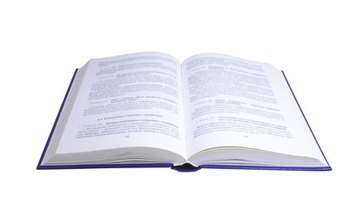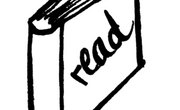Reading fluency is an educational term that applies to how well a person reads. This type of measure encompasses factors such as word decoding, how easily words are decoded and the ability to phrase and express reading passages appropriately. Assessing reading fluency allows educators to determine if a child is reading at the appropriate level for his age or if he needs extra help. Calculate reading fluency through multi-dimensional observations.
Accuracy and Rate
Give a student a grade-appropriate reading passage of approximately 250 words. Keep a copy of the same passage for yourself.
Instruct the student to read the passage aloud for one minute as you tape the reading. If the student pauses at a word for more than two to three seconds without attempting to say the word, tell her what it is.
Mark your text at the point where the student finished reading once the minute was up. Mark the errors. Examples of errors include mispronouncing a word, substituting a word for another word, reversing words within a sentence, omitting a word and words that you had to supply to the student. If a student makes a mistake, but corrects it immediately himself, do not count it as an error.
Count the number of words that the student read correctly and divide this figure by the total number of words read. Multiply your answer by 100 to get a percentage. For instance, if the student read 100 words out of 120 words correctly, you would divide 100 by 120 to get 0.83, which you would multiply by 100 to get an accuracy rating of 83 percent.
Compare the student's overall number of words read correctly with the target norms for that child's grade level.
Multidimensional Scale
Print out the rubric you want to use for a more in-depth reading assessment. A rubric is a checklist of standards a child must meet to score highly in an assessment. Colleges of education and reading specialists produce rubrics for this task.
Listen for the following types of expressions while a child is reading a selected passage: pace, volume, expression, smoothness and phrasing.
Mark on the rubric where the child is performing in each category. Each category will have its own score, based on how the child performed in that area.
Add the scores for each category for the total multidimensional score.
Tip
Test for fluency multiple times with different reading sources in order to gain a more accurate picture of fluency. Chart a student's progress over time to study changes.
Related Articles
Tips
- Test for fluency multiple times with different reading sources in order to gain a more accurate picture of fluency. Chart a student's progress over time to study changes.
Writer Bio
Charlotte Johnson is a musician, teacher and writer with a master's degree in education. She has contributed to a variety of websites, specializing in health, education, the arts, home and garden, animals and parenting.











